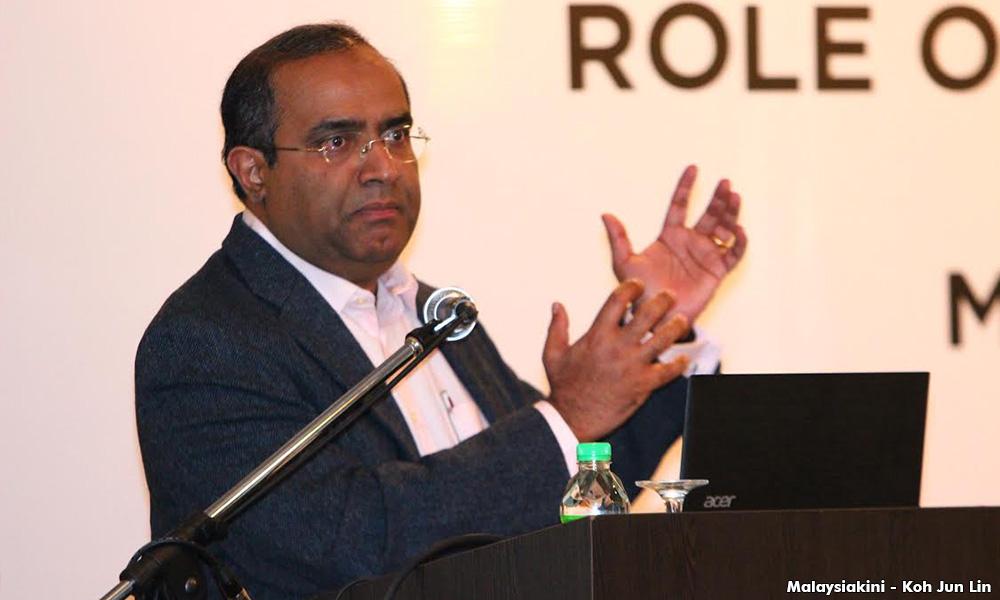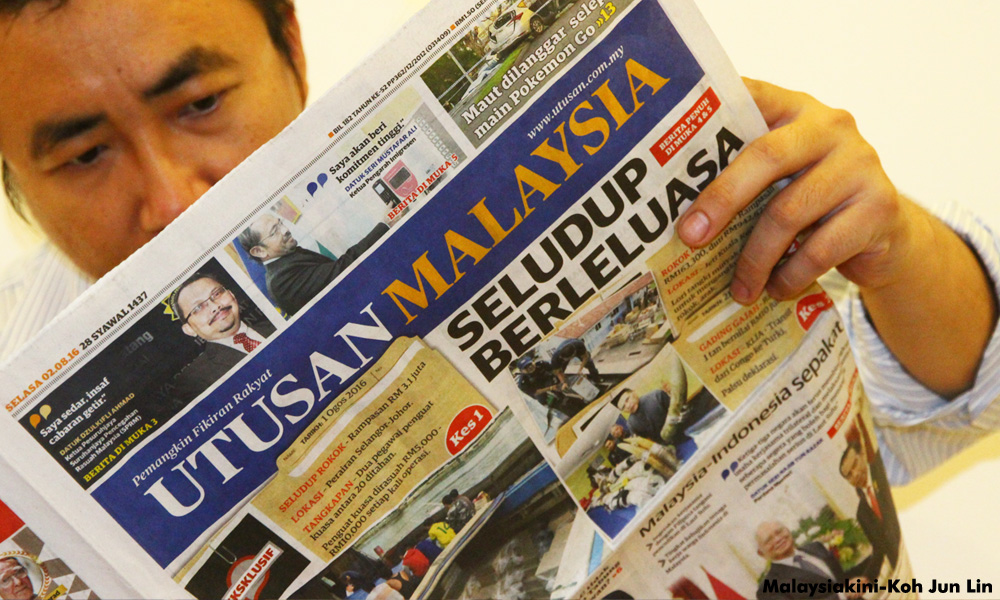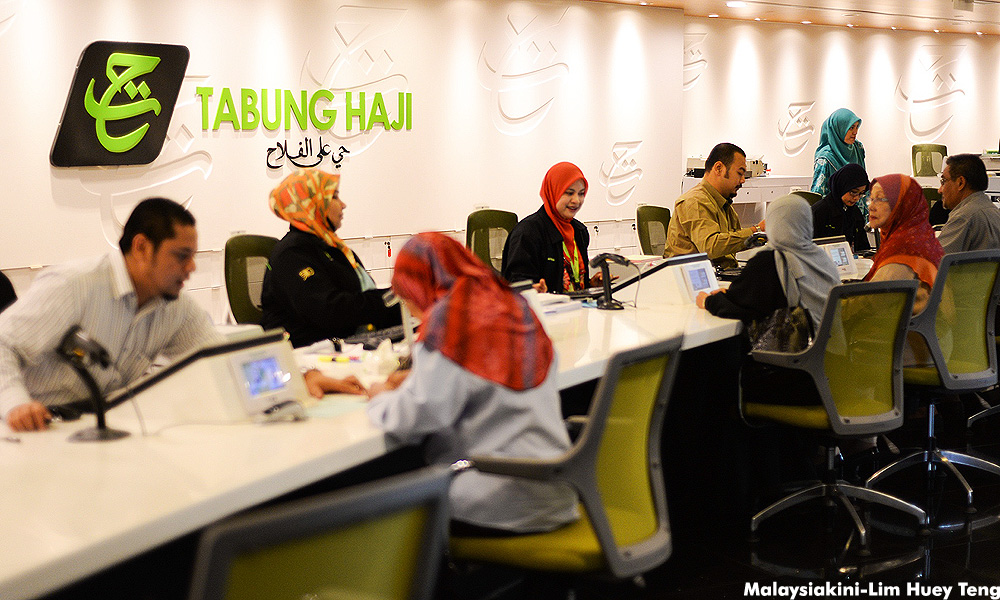INTERVIEW | Terence Gomez, in his latest book, "Minister of Finance Incorporated: Ownership and Control of Corporate Malaysia", traces the government’s role in the corporate sector. He provides an assessment of Malaysia’s new political economy, with a focus on ownership and control of the corporate sector.
Gomez, who is a professor of political economy at Universiti Malaya, is also the author of "Politics in Business: Umno’s Corporate Investments", a pioneering publication in 1990, which traced how Umno secured a huge equity interest in Malaysia’s corporate sector.

In "Minister of Finance Incorporated", Gomez (photo) and his team of researchers offer another pioneering assessment of Malaysia’s corporate sector, though their focus is now government-linked investment companies (GLICs), a type of state enterprise that has long prevailed in the economy but has not been analysed.
Gomez argues that corporate power is now concentrated in these GLICs that are ultimately controlled by the minister of finance. Interestingly, Gomez admits that these GLICs are well-managed by highly qualified professionals, those these people can be subservient to the dictates of the minister of finance.
By focusing on the GLICs, "Minister of Finance Incorporated" ignites interesting debates about the role of the government in the economy, an issue that requires thoughtful consideration given their huge presence in the corporate sector. Through in-depth research, novel insights are provided into this question of government ownership and control of corporate Malaysia.
This review is presented as a question-and-answer dialogue with the author, to draw attention to this study’s major findings. Much of what is outlined below is from this book.
Professor Gomez, in your latest book, "Minister of Finance Incorporated", what are your major findings?
Malaysia’s political economy has undergone a major transition since the 1990s that has escaped public attention.
Corporate power has shifted from Umno and well-connected businessmen to the government. Huge business groups controlled by the government have emerged, seen in the dominance that a mere seven GLICs have over the corporate sector.
During this transition, one extraordinary outcome was the removal of Umno, its members and the business associates of party leaders as owners of publicly-listed government-linked companies (GLCs).

Umno now has direct equity ownership of only one quoted company, the media-based Utusan Melayu, while no Umno member figures as a major corporate player.
Umno’s removal from the corporate sector has major implications. The power nexus involving politics and business has fundamentally shifted at the federal level.
If this political-business nexus once involved numerous powerful Umno politicians who had enormous influence over the corporate sector, economic power is now concentrated in the office of the minister of finance.
Who are the GLICs?
Seven institutions have been classified by the government as GLICs.
They are the Minister of Finance Incorporated (MoF Inc), the government’s holding company, which participates actively in corporate manoeuvres and owns a diverse range of firms known as government-linked companies (GLCs).
The sovereign wealth fund, Khazanah Nasional, is policy-based and implements major plans, including venturing abroad to support the government’s business internationalisation endeavour.

The investment trust fund, Permodalan Nasional (PNB, or National Equity Corporation), is portfolio-oriented, though with a policy agenda to redistribute wealth more equitably between the nation’s ethnic groups.
Two savings-cum-pension-based funds, the Employees' Provident Fund (EPF) and the Kumpulan Wang Persaraan Diperbadankan (KWAP, or Retirement Fund Incorporated), are portfolio-based with an equity interest in a vast number of companies.
Lembaga Tabung Angkatan Tentera (LTAT, or Armed Forces Fund Board) is also a savings-cum-pension-based fund but is active in the management and development of large businesses in various sectors.

Lembaga Tabung Haji (LTH, or Pilgrims Fund Board), though portfolio-based, has an organic form of enterprise development, active in the development of Islamic-based products and services.
How are these GLICs owned and controlled?
The Ministry of Finance sits at the apex of a complex business group structure comprising its holding company, MoF Inc, as well as other GLICs, quoted GLCs and a huge number of unquoted private firms.
MoF Inc is evidently a “super-entity”, given its enormous influence over the corporate sector through its substantial ownership and control of the other GLICs and the financial sector, comprising Malaysia’s leading commercial banks. Through its ownership of these commercial banks, the government can control the economy indirectly by acting as a lender to private firms.
However, MoF Inc’s vast network of business interactions constitutes only one part of the government’s complex system of control over the corporate sector. State governments have a similarly sizeable interest in the corporate sector.
In this system, the board of directors are important. Directorships function as a primary avenue through which the government can dictate decision-making within GLICs and GLCs.
Our comparison of ownership and directorate patterns in 1996 (prior to the 1997 currency crisis) and 2013 revealed a new phenomenon.

Only a small number of Umno members remain as directors of these government-owned enterprises. These findings are particularly astonishing as Umno remains a party riddled with money politics, patronage and rent-seeking.
How did Malaysia get to this point?
Three major events have contributed to these transitions where the prime minister and GLICs have emerged as economic powerhouses.
The first was the implementation of the New Economic Policy (NEP) in 1971, which allowed these enterprises to gradually acquire a major presence in the corporate sector.
The involvement of the GLICs in the corporate sector diminished with the active promotion of privatisation from the mid-1980s. With this spate of privatisations, major enterprises fell under the ownership and control of Umno and well-connected businesspeople.
The second defining event was the 1997 currency crisis and the momentous intra-elite political feuding that ensued the following year. The GLICs’ bailout of ailing well-connected companies and their takeover of firms associated with ousted Umno leaders led to their re-emergence as major actors in the corporate sector.
The third defining moment was when reform of the GLICs and GLCs was initiated by Dr Mahathir Mohamad in the late 1990s, though actively implemented by Abdullah Ahmad Badawi from 2003. Najib Abdul Razak continued these reforms when he took office in 2009 as prime minister.
The current concentration of economic power in the office of the prime minister is particularly salient because when Najib took office in 2009 he voiced his intention to transfer GLCs to the private sector, arguing that the private sector should function as the primary engine of growth.
Unlike Mahathir, Najib appeared personally uninterested in business as a government tool for economic and corporate development when he came to power. Najib, however, soon came to realise the significant economic influence that the GLICs have over the corporate sector...

